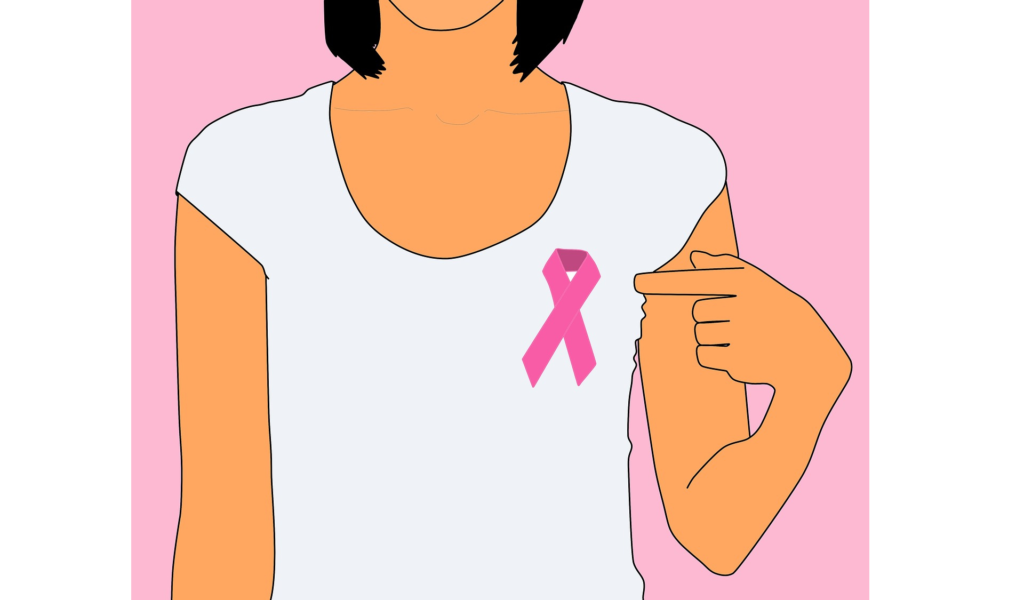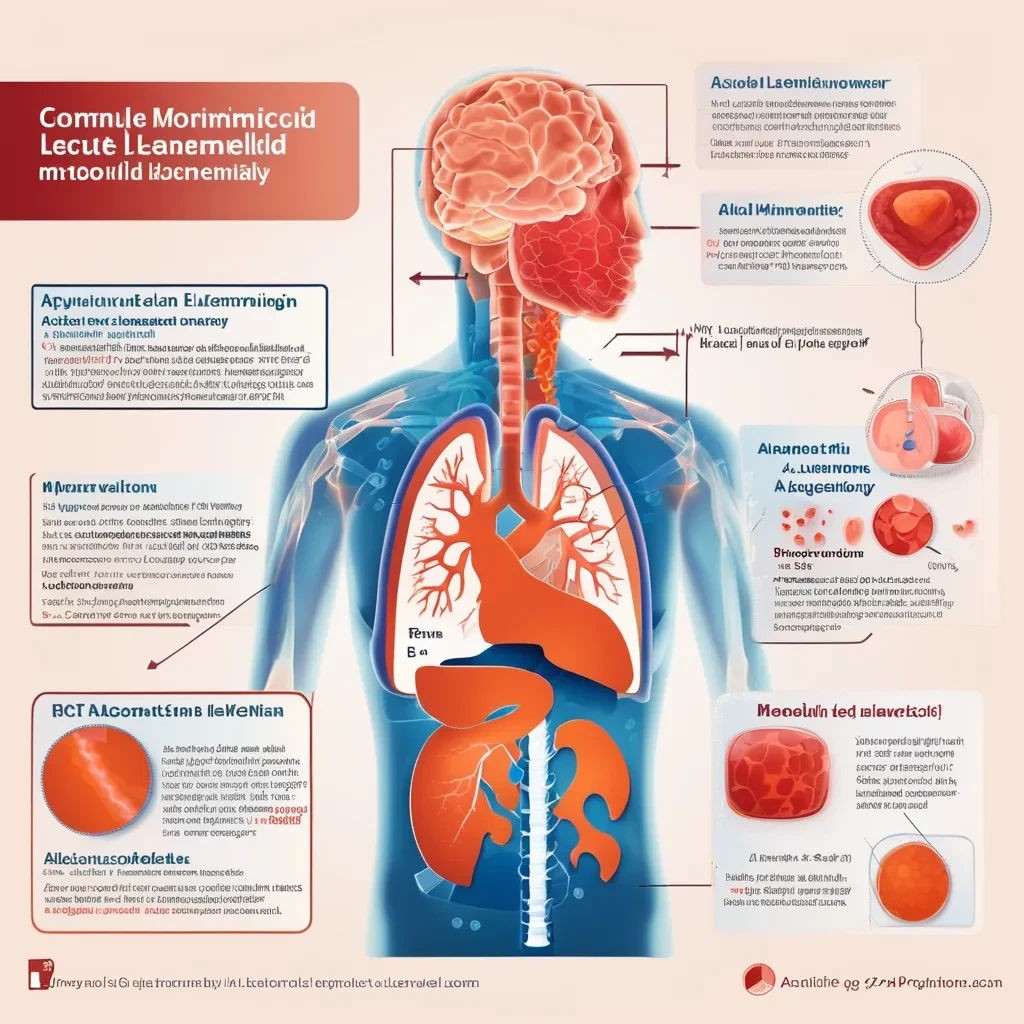
What is Acute Myeloid Leukemia?
Acute Myeloid Leukemia is a cancer that basically affects the bone marrow. This is the soft inner part of bones, which makes blood cells. Though it often attacks adults, it gets children too, but less than if it were adults. AML is a fast moving aggressive disease of abnormal white blood cells, causing the cells to accumulate in the bone marrow. This is because it disrupts the normal generation of blood cells. So, it would be said as one of the toughest types of treatments for leukemia because this type of leukemia acts in an aggressive manner, which demands to be treated by medical remedy in a swift and efficient way. A review of this topic will cover the causes, symptoms, methods of diagnosis, treatments, and studies on AML, all in hopes of finding the best perspective regarding the condition. Acute Myeloid Leukemia is a malignancy and is associated with the myeloid lineage of blood cells. In AML, the bone marrow produces a quantity of abnormal immature blood cells known as blasts. These defective cells fail to mature into normal red cells, white cells, or platelets but begin to pile up in the bone marrow leading to displacement of other cells inside it and leak out to the blood.
It runs relentlessly therefore being called “acute” because the cancer may kill so quickly and utterly if left untreated. They are split into subcategories depending on the range of anomalies at both genetic and chromosome, as well as molecular levels, which characterize cellular morphology, too of affected cells.
1. Considered risk factors of AML
There is not always a clear reason for why a person has developed AML, but these are considered risk factors.
1.1. Genetic mutations
AML essentially arises through mutations in DNA in developing blood cells. The genetic alterations may activate oncogenes, which are genes that promote cell prolife ration or inactivate tumor suppressor genes that depress cell growth; thus there is uncontrolled proliferation of abnormal cells.
1.2. Age and Sex
AML is also common in the elderly population whose average age at diagnosis is about 68 years. It also has a higher predisposition among the male gender than among females.
1.3. Ionizing Radiation and Chemicals
Exposure to very high levels of ionizing radiation or chemicals such as benzene increases one’s chances of having AML.
1.4. Smoking
Exposure to carcinogens from cigarette smoking that probably will cause DNA damage in the bone marrow, therefore a causative action to the development of AML.
1.5. Prior chemotherapy or radiation therapy.
AML risk factors include a previous history of chemotherapy and radiation therapy in humans since human beings may be susceptible to secondary AML through potential DNA damage from other cancers.
1.6. Inherited Genetic Syndromes
Some genetic syndromes-Down syndrome, Fanconi anemia, and Li-Fraumeni syndrome-affect the risk of acquiring AML.
2. Symptoms of AML
AML Symptoms are vague and may be mistaken as symptoms of other diseases because they arise from a decreased amount of normal blood cells in addition to an increased amount of abnormal ones. Common symptoms involves following
2.1. Fatigue and weakness
These are often caused by anemia, or reduced red blood cell count.
Why does fatigue and weakness occur in AML?
Anemia (Low Red Blood Cell Count)
Anemia is another leading cause of fatigue in AML due to a lack of red blood cells.
Red blood cells supply oxygen into the body while its insufficient amount will also decrease muscle and organ oxygen supplying and resulted in exhaustion as well as weakness.
In AML, proliferating leukemia cells shrink the marrow space occupied by the healthy blood-forming cells, thus decreasing red blood cell production.
2.2. Frequent infections
This is caused by the minimal healthy white blood cells in the body. AML is a disease due to which there is no immunity in the body, hence any viral infection occurs easily.
2.3. Easy bruising or bleeding
This mostly occurs due to less counts of platelets. Easy bruising and bleeding are caused by low levels of platelets in the blood, a condition known as thrombocytopenia, in Acute Myeloid Leukemia.
2.4. Bone pain
Bone pain: It often occurs in the long bones. Bone pain in acute myeloid leukemia (AML) happens when cancerous cells grow inside the bone marrow, crowding it and causing pressure. This pain often feels deep and persistent.
2.5. Fever
It results either due to infection or from the cancer itself. Pale skin: It might be because of anemia. Fever in acute myeloid leukemia (AML) occurs due to infections or the disease itself. The weakened immune system struggles to fight germs, making infections common and triggering frequent fevers.
2.6. Pale skin
Pale skin: It might be because of anemia. Pale skin in acute myeloid leukemia (AML) happens because of reduced red blood cells. The body lacks enough oxygen-carrying cells, leading to a pale or washed-out appearance.
2.7. Unexplained Weight Loss
This mostly occurs at the final stages. Unexplained weight loss in acute myeloid leukemia (AML) happens as the body uses extra energy to fight the disease. Loss of appetite and nausea from AML can also contribute to weight loss.
2.8. Also these
Wet Socks or Swollen Gums or Enlarged Liver/Spleen: This is because of infiltration with abnormal cells in these areas. This disorder typically occurs rapidly thus it becomes a medical emergency.
3. Diagnosis Acute Myeloid Leukemia
AML diagnosis is made upon careful history taking, physical examination, and diagnostic tests on the patient.
3.1. Complete Blood Count (CBC)
A CBC test usually is the first indicator of AML, and it might include an elevated count of white blood cells, a fall in the count of red blood cells, or low platelets.
3.2. Bone Marrow Aspiration and Biopsy
This is by taking out a small amount of bone marrow, which is usually taken from the hip bone and later analysed using a microscope. This is proof of the existence of leukemic cells and its type.
3.3. Cytogenetic and Molecular Testing
These tests will determine the genetic and molecular characteristics of leukemic cells, which in turn helps classify the AML subtype or sub-type and guides treatment.
3.4. Flow Cytometry
Flow cytometry will allow determination of the presence of markers on the leukemia cells that correctly classify.
3.5. Imaging Studies
X-ray radiography, CT, or MRIs are imaging studies that can assess spread of the disease to other organs or tissues.
4. Treatment
The goal of AML therapy depends on the patient’s age, general health status, type of AML, and genetic characteristics of leukemia cells. The broad aims of therapy are to obtain remission and in optimal cases, cure.
4.1. Chemotherapy
Chemotherapy is considered to be at the forefront of treatment for AML. The use of chemotherapy is in two forms:
4.1.2. Induction Therapy- This is mainly to kill as many leukemic cells as possible and achieving remission. This can be given only in hospitals. It is because it is so intense in its treatment, and resultant side effects have to be managed.
4.1.2. Consolidation Therapy: This should be given after remission so that all leukemic cells are eradicated, meaning it cannot recur.
4.2. Targeted Therapy
Some of the targeted drugs targeting particular genetic aberrations, like FLT3 inhibitors midostaurin and IDH inhibitors like enasidenib, may be employed for patients diagnosed with AML
4.3. SCT
It is administered if the patient’s AML falls in the category of high risk, or when it recurs. It is also transferring of a patient’s bone marrow, suffering from leukemia into his body. In this process, diseased marrow is replaced with healthy stem cells obtained from a donor.
4.4. Supportive Care
These are transfusions, antibiotics, and other treatments employed to manage symptoms and complications of therapy.
4.5. Clinical Trials
Other available treatment options for the patient would include clinical trials of new drugs, medications, or procedures proposed for AML.
5. Prognosis
The prognosis of AML is very individualistic and depends on the age at diagnosis, the patient’s general medical condition, the genetic mutation responsible for AML, and his response to therapy. For example, young patients and those with favourable genetic features tend to have better prognoses. Older adults also experience a bit of a challenge concerning long-term remission.
Dramatic survival rates and quality of life of patients with AML improved through the molecular advance diagnostic therapy, and targeted therapy; yet still remains a significant problem-which is recurrence disease reminding us that something remains to be discovered or innovated.
6. Challenges in the Management of AML
Despite increased knowledge and management of AML, there are still numerous challenges:
6.1. Relapse: There is a high rate of relapse after primary treatment in many patients.
6.2. Drug Resistance: Some leukemia cells are resistant to chemotherapy or targeted therapies
6.3. Intensity of Treatment Toxicity: Intensive treatments cause considerable toxicities, especially in elderly patients.
6.4. Access to Care: All patients cannot avail advanced treatments like stem cell transplantation either because of its high cost or because no matching donor can be found.
7. Current Research and Advances
Research is already changing the scenario of treatment for AML. Among some promising areas, following can be stated:
7.1. Immunotherapy
: CAR-T cell therapy along with monoclonal antibodies are under research pipeline for it to let the immune system work upon leukemia cells.
7.2. Epigenetic Therapies
Medications that interfere with epigenetic changes in leukemia cells are proving to be effective in clinical trials.
7.3. Minimal Residual Disease Monitoring
The development of new MRD detection technologies is enabling better and earlier relapse detection and decision-making at the treatment table.
8. Life with AML
The diagnosis of AML can be overwhelming, but support is available for patients and their families. Organizations such as the Leukemia & Lymphoma Society offer resources, education, and financial assistance.
8.1. Tips for Coping
8.1.1. Seek Support: Participate in support groups to interact with others who are experiencing similar challenges.
8.1.2. Stay Informed: Learn about your condition and treatment options to make informed decisions.
8.1.3. Focus on Nutrition and Exercise: Maintain a healthy lifestyle to improve your resilience during treatment.
8.1.4. Manage Stress: Get relaxing techniques, such as meditations or yoga, so the patient can reduce stress.
Conclusion
Acute Myeloid Leukemia is complex, aggressive, and requires to be treated immediately and effectively. Despite a series of challenges, still more advancement in researches, diagnostics, and personalized treatments seem to offer hope for good outcome results. For those who have AML either the patients, caregivers or providers, being informed is an excellent way to navigate such journey.
If you or the person you love suffers from AML, getting a specialist on board, joining clinical trials, and having access to helpful resources can be the difference between fight and death.
This information-only post is not medical professional advice. A person should see a medical professional for a proper diagnosis and to discuss the possibilities of treatment.
This information is written by
Mr. Suhas Dadarao Avhad
Author and CEO (www.usahealthy.net)


